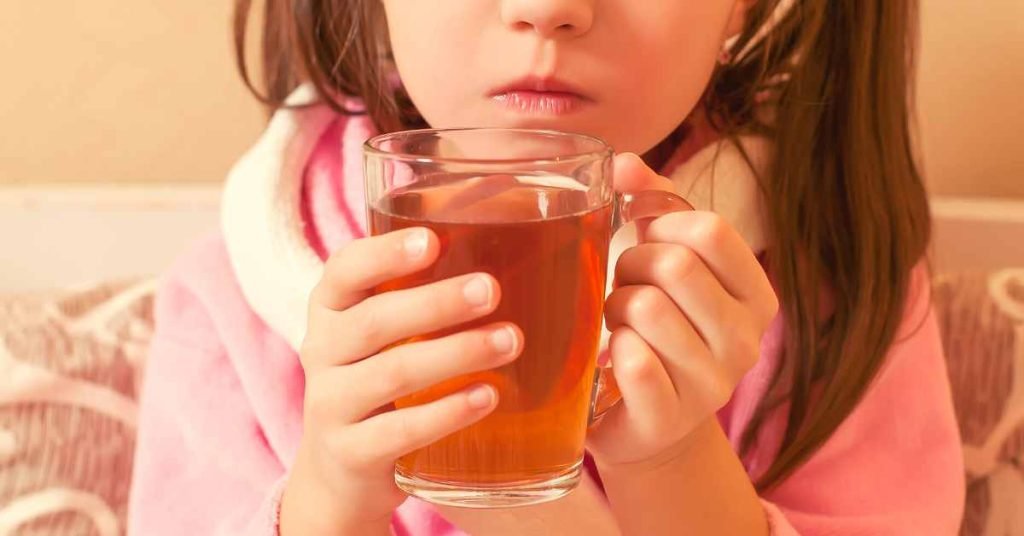Scarlet fever, an infectious disease caused by Streptococcus pyogenes bacteria, predominantly affects children.
Characterized by a distinctive red rash, fever, and sore throat, this condition can be uncomfortable and concerning for both patients and caregivers.
While antibiotics are the primary treatment for scarlet fever, complementary approaches, such as the use of certain types of tea, may provide soothing relief and support the body’s healing process.
This article explores scarlet fever, the potential benefits of tea, and practical ways to incorporate tea into the management of this childhood illness.
Understanding Scarlet Fever

Scarlet fever is a bacterial infection that often occurs in conjunction with a streptococcal throat infection, commonly known as strep throat.
The causative agent, Streptococcus pyogenes, produces toxins that lead to the characteristic symptoms of scarlet fever.
The condition typically begins with a sore throat, fever, and headache, followed by the development of a rash that gives the skin a red and sandpaper-like texture. Scarlet fever primarily affects children aged 5 to 15 but can occur at any age.
Types of Tea and Their Potential Benefits
Hibiscus Tea
Hibiscus tea, made from the dried petals of the hibiscus flower, is rich in antioxidants and vitamin C. Its anti-inflammatory properties may help alleviate sore throat symptoms, while the vitamin C content supports the immune system in fighting bacterial infection.
Chamomile Tea
Chamomile tea, derived from the dried flowers of the chamomile plant, has long been celebrated for its calming and anti-inflammatory properties. It may help soothe sore throat discomfort and promote relaxation, which can be especially beneficial during the feverish and restless phase of scarlet fever.
Ginger Tea
Ginger tea, made from the rhizome of the ginger plant, possesses anti-inflammatory and antimicrobial properties. It can be effective in easing nausea and digestive discomfort, common symptoms of scarlet fever. Additionally, ginger’s warming nature may contribute to overall comfort during the recovery period.
Licorice Root Tea

Licorice root tea, derived from the root of the Glycyrrhiza glabra plant, is known for its soothing properties. It may help relieve throat irritation and has been used traditionally to support respiratory health. However, it’s essential to note that excessive consumption of licorice should be avoided, especially for individuals with hypertension.
Peppermint Tea
Peppermint tea, made from the leaves of the peppermint plant, contains menthol, which has a cooling effect on the throat. It may help alleviate throat pain and has antimicrobial properties that can contribute to overall oral health during the infection.
Ways to Incorporate Tea into Scarlet Fever Management
Hydration and Comfort
Encouraging the patient to stay hydrated is crucial during scarlet fever. Offering warm herbal teas not only provides fluids but also offers comfort and relief from sore throat symptoms. Ensure that the tea is cooled to a comfortable temperature for consumption, especially for children.
Soothing Throat Gargle
Brewed and cooled tea can be used as a soothing gargle for a sore throat. Chamomile, licorice root, or ginger tea can be particularly beneficial for this purpose. Gargling with warm tea several times a day may help alleviate throat discomfort.
Popsicles or Ice Cubes

For children who may have difficulty swallowing liquids, freezing tea into popsicles or ice cubes can provide a soothing and hydrating option. Hibiscus tea, in particular, can offer a pleasant flavor and contribute to vitamin C intake.
Steam Inhalation
Adding a few drops of essential oils, such as peppermint or eucalyptus, to hot tea and inhaling the steam can help relieve nasal congestion and provide respiratory comfort. This method is suitable for older children and adults.
Herbal Infusions for Fever Relief
Peppermint, chamomile, and hibiscus teas are known for their cooling properties. As a warm beverage, they may help provide relief from fever symptoms. Ensure that the tea is not too hot and monitor the patient’s comfort level.
Precautions and Considerations
Medical Consultation
While tea can be a soothing addition to scarlet fever management, it is crucial to consult with a healthcare professional for proper diagnosis and treatment. Antibiotics are typically necessary to treat the underlying bacterial infection.

Caffeine-Free Options for Children
Consider caffeine-free herbal teas for children to avoid potential side effects. Additionally, always check for any allergies or sensitivities to specific herbs before introducing new teas.
Moderation and Dilution
Ensure that teas are brewed to a mild strength, especially for children. Diluting teas with water or opting for commercially available herbal tea blends designed for children can be a safe and flavorful choice.
Final Word
Tea, with its diverse types and healing properties, can play a supportive role in managing the symptoms of scarlet fever.
While it is not a substitute for medical treatment, the soothing nature of herbal teas can provide comfort during the recovery period.
From easing sore throat discomfort to providing hydration and immune support, the careful selection and application of teas can contribute to a holistic approach to scarlet fever care.
As with any health condition, seeking guidance from healthcare professionals ensures comprehensive and effective management.
MEDICAL DISCLAIMER
Itsnevernotteatime.com cannot and does not contain medical/health advice. The medical/health information is provided for general and educational purposes only and is not a substitute for professional advice.




